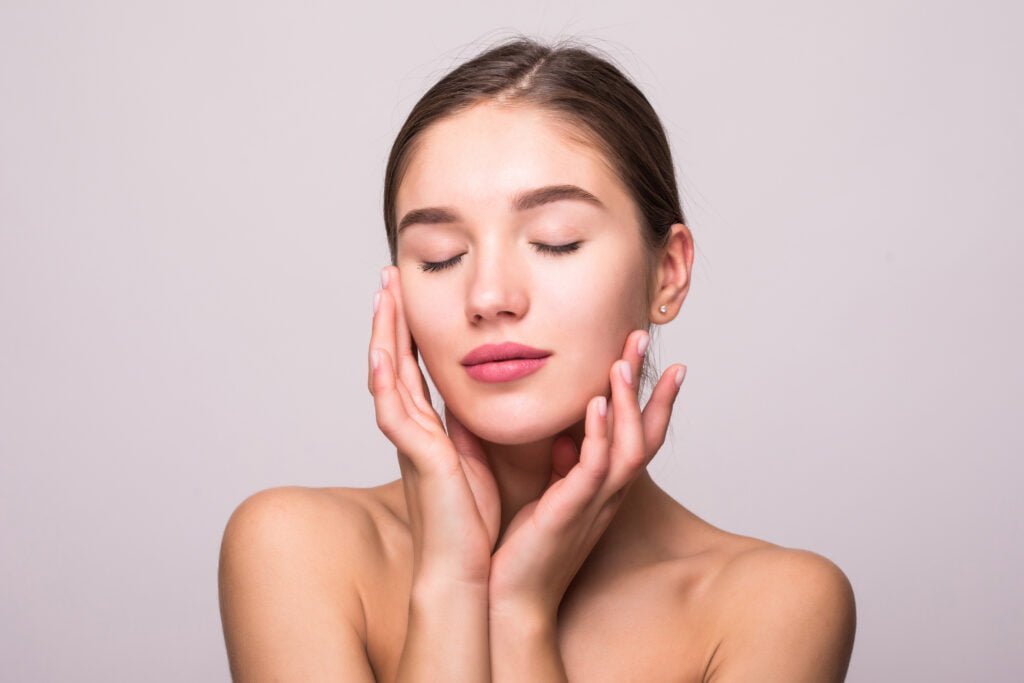The Art of Skincare: Understanding Which Products Do Not Mix
In the realm of skincare, navigating the vast array of products can sometimes feel like traversing a maze of options, each promising transformative results. However, achieving radiant and healthy skin requires more than just slathering on every serum and cream in sight. It demands a nuanced understanding of skincare ingredients and their interactions, particularly knowing which products do not mix well together. Welcome to the art of skincare, where knowledge, science, and intuition converge to create a personalized regimen tailored to your skin's unique needs.
The journey to glowing skin begins with understanding the intricacies of skincare ingredients and how they interact with one another. While certain combinations can enhance efficacy and deliver remarkable results, others can lead to irritation, inflammation, and even long-term damage. Therefore, arming yourself with knowledge about which products do not mix is essential for crafting a skincare routine that promotes skin health and vitality.

At the heart of the art of skincare lies a deep appreciation for the human touch. While technology and automation have undoubtedly transformed the skincare industry, there's no substitute for the expertise and personalization that a skilled skincare professional brings to the table. Whether it's a licensed aesthetician, dermatologist, or skincare enthusiast, seeking guidance from someone who understands your skin's unique needs can make all the difference in achieving optimal results.
In this blog post, we will delve into the intricacies of skincare, exploring the products that do not mix well and why. From potent actives to soothing emollients, we'll dissect common skincare ingredients and their interactions, empowering you to make informed decisions about your skincare routine. Additionally, we'll highlight the importance of the human touch in skincare, underscoring the value of professional guidance and personalized recommendations.
Join us as we embark on a journey into the art of skincare, where science meets intuition and knowledge is the key to unlocking your skin's full potential. Together, we'll unravel the mysteries of skincare ingredients, dispel myths, and empower you to curate a skincare regimen that nourishes, protects, and rejuvenates your skin from within. Let's delve deeper into the world of skincare and discover the transformative power of informed choices and personalized care.
The Importance of a Holistic Skincare Approach:
The art of Skincare is not a one-size-fits-all endeavor; it’s a journey that requires careful consideration of individual skin types, concerns, and goals. While the skincare industry is flooded with an abundance of products, from cleansers to serums to moisturizers, not all products play well together. Mixing incompatible skincare ingredients can lead to irritation, inflammation, and even exacerbation of skin issues. Therefore, taking a holistic approach to skincare, one that considers the interactions between different products, is paramount.
Understanding Skincare Ingredients:
Before delving into which skincare products do not mix, it’s crucial to have a basic understanding of skincare ingredients and their functions. Ingredients such as retinoids, AHAs (alpha-hydroxy acids), BHAs (beta-hydroxy acids), vitamin C, and niacinamide are commonly found in skincare formulations and offer a myriad of benefits, from exfoliation to brightening to anti-aging. However, when combined incorrectly, these potent ingredients can cancel each other out or cause adverse reactions, compromising the integrity of the skin barrier.
Skincare Products That Do Not Mix:
Retinoids and AHAs/BHAs: Retinoids, such as retinol and tretinoin, are revered for their anti-aging properties and ability to promote cell turnover. However, when used in conjunction with AHAs (like glycolic acid and lactic acid) or BHAs (such as salicylic acid), they can cause excessive irritation and sensitivity. These ingredients work by exfoliating the skin, and combining them with retinoids can lead to over-exfoliation and an increased risk of irritation.
Vitamin C and Niacinamide: Both vitamin C and niacinamide boast impressive antioxidant properties and are known for their ability to brighten and even out skin tone. However, when used together at high concentrations, they can destabilize each other, rendering them less effective. To avoid this, it’s best to use vitamin C in the morning and niacinamide in the evening, or choose products that combine lower concentrations of both ingredients.
Oil-Based and Water-Based Products: Oil-based and water-based skincare products have different formulations and textures, making them incompatible when used together. Oil-based products, such as facial oils and oil-based moisturizers, create a barrier on the skin’s surface, preventing water-based products, like serums and toners, from penetrating effectively. To ensure optimal absorption and efficacy, it’s best to layer water-based products before oil-based ones.
Benzoyl Peroxide and Retinoids: Benzoyl peroxide is a potent acne-fighting ingredient that works by reducing acne-causing bacteria and unclogging pores. However, when used in conjunction with retinoids, it can cause excessive dryness, irritation, and peeling. It’s advisable to alternate the use of benzoyl peroxide and retinoids or use them at different times of the day to minimize potential side effects.
Exfoliating Products: While exfoliating products, such as scrubs and peels, are beneficial for sloughing away dead skin cells and promoting cell turnover, using them too frequently or in combination with other exfoliating ingredients can lead to over-exfoliation and a compromised skin barrier. It’s essential to use exfoliating products sparingly and to avoid combining multiple exfoliants in the same routine.
Strong Acids and Vitamin C: Strong acids, such as high-concentration AHAs or BHAs, can lower the pH of the skin, making it more acidic and potentially destabilizing vitamin C formulations. While vitamin C is acidic itself, combining it with potent acids can lead to irritation and decreased efficacy. It’s best to use strong acids and vitamin C at different times or on alternate days to minimize the risk of adverse reactions.
The Human Touch in Skincare:
While understanding which skincare products do not mix is essential, it’s equally important to emphasize the role of the human touch in crafting a personalized skincare routine. A knowledgeable skincare professional can assess your skin’s unique needs, recommend appropriate products, and tailor a regimen that addresses your specific concerns and goals. Additionally, they can provide guidance on product application techniques, frequency of use, and potential interactions between different ingredients, ensuring that you achieve the best possible results without compromising your skin’s health.
Conclusion:
In the ever-evolving world of skincare, knowledge is power, especially when it comes to understanding which products do not mix. By avoiding incompatible skincare combinations and taking a holistic approach to skincare, you can optimize the effectiveness of your skincare routine and achieve the healthy, radiant skin you desire. Remember, the human touch is invaluable in skincare. Seek the guidance of a skincare professional who can help you navigate the complexities of skincare ingredients and create a regimen customized to suit your individual needs and preferences. With the right approach and expertise, you can unlock the transformative power of skincare and embark on a journey to beautiful, glowing skin.

The art of skincare involves the thoughtful selection and application of skincare products to achieve healthy, radiant skin. It encompasses understanding skin types, concerns, and the interactions between different skincare ingredients to create an effective and personalized routine.
Understanding which skincare products do not mix is crucial for preventing adverse reactions and maximizing the effectiveness of your skincare routine. Mixing incompatible products can lead to irritation, inflammation, and compromised skin barrier function, hindering your skincare goals.
Some skincare ingredients that should not be mixed include retinoids and AHAs/BHAs, vitamin C and niacinamide, benzoyl peroxide and retinoids, and strong acids with other active ingredients. These combinations can cause irritation, decrease efficacy, or even lead to chemical reactions that damage the skin.
To identify compatible skincare products, look for formulations that complement each other in terms of ingredients and functions. For example, pairing hydrating ingredients like hyaluronic acid with occlusive moisturizers can enhance hydration without causing irritation.
Yes, you can use products from different skincare brands together, as long as their formulations are compatible. It’s essential to read ingredient lists carefully and avoid mixing products with conflicting active ingredients or textures.
Thank you for your sharing. I am worried that I lack creative ideas. It is your article that makes me full of hope. Thank you. But, I have a question, can you help me?
Pingback: Joah Beauty: Elevate Your Beauty Experience With Innovation And Inclusivity
Pingback: Hair By Ericka J: Transforming Tresses With Style And Expertise
Pingback: Crafting An Engaging Salon Newsletter: A Comprehensive Guide
Pingback: Facial For Glowing Skin: The Ultimate Guide To Achieving Glowing Skin With Facials
Your point of view caught my eye and was very interesting. Thanks. I have a question for you.